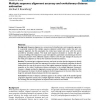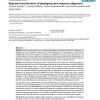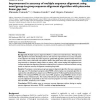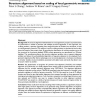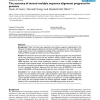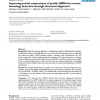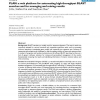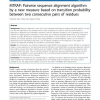BMCBI
2005
14 years 22 days ago
2005
Background: Sequence alignment is a common tool in bioinformatics and comparative genomics. It is generally assumed that multiple sequence alignment yields better results than pai...
BMCBI
2005
14 years 22 days ago
2005
Background: Two central problems in computational biology are the determination of the alignment and phylogeny of a set of biological sequences. The traditional approach to this p...
BMCBI
2006
14 years 26 days ago
2006
Background: Multiple sequence alignment (MSA) is a useful tool in bioinformatics. Although many MSA algorithms have been developed, there is still room for improvement in accuracy...
BMCBI
2006
14 years 26 days ago
2006
Background: A structure alignment method based on a local geometric property is presented and its performance is tested in pairwise and multiple structure alignments. In this appr...
BMCBI
2006
14 years 27 days ago
2006
Background: There have been many algorithms and software programs implemented for the inference of multiple sequence alignments of protein and DNA sequences. The "true" ...
BMCBI
2007
14 years 28 days ago
2007
Background: Remote homology detection is a challenging problem in Bioinformatics. Arguably, profile Hidden Markov Models (pHMMs) are one of the most successful approaches in addre...
BMCBI
2007
14 years 28 days ago
2007
Background: BLAST searches are widely used for sequence alignment. The search results are commonly adopted for various functional and comparative genomics tasks such as annotating...
BMCBI
2008
14 years 28 days ago
2008
Background: Multiple sequence alignments are a fundamental tool for the comparative analysis of proteins and nucleic acids. However, large data sets are no longer manageable for v...
BMCBI
2010
14 years 28 days ago
2010
Background: While most multiple sequence alignment programs expect that all or most of their input is known to be homologous, and penalise insertions and deletions, this is not a ...
BMCBI
2010
14 years 29 days ago
2010
Background: Sequence alignment is one of the most important techniques to analyze biological systems. It is also true that the alignment is not complete and we have to develop it ...
